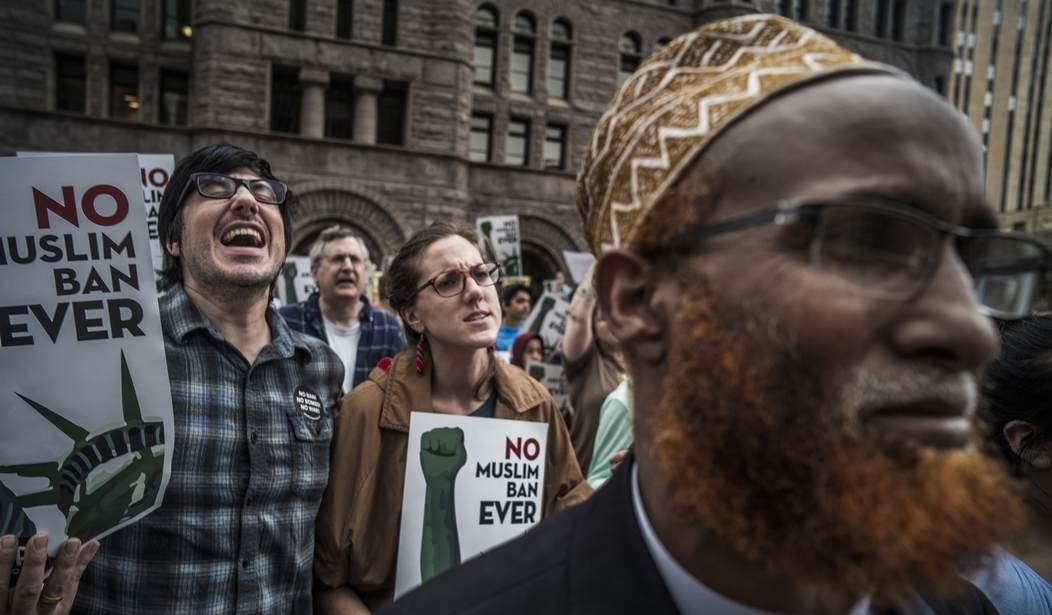The New York Times story opens with a scene of unmitigated horror: “On May 30, 2019, Mohamed Abdulrahman Ahmed should have been in class preparing for exams. Instead, neighbors found the gifted high school senior hanging lifeless from a beam in his home in the Dadaab refugee camp in northeastern Kenya. He had taken his own life.” Since this is the New York Times, it comes as no surprise that the ultimate culprit is none other than Donald J. Trump, and his nefarious “Muslim Ban” that his wise successor’s handlers have now consigned to the dustbin of history.
Times author Ty McCormick does his best to tug at our heartstrings as he describes Dadaab, “a sea of sand and thorn scrub and makeshift tarpaulin dwellings” that is “home to more than 200,000 people — a city the size of Richmond, Va., or Spokane, Wash., except without electricity or running water.”
It’s a place absolutely mired in despair, but “over the years, refugees in Dadaab have clung to one hope: resettlement overseas, sometimes in Europe or Canada but mostly in the United States. Tens of thousands of Dadaab’s residents have come to the United States; in 2015, for instance, more than 3,000 people from the camp were resettled there.”
But then came the reign of the Evil One: “Those hopes of a better life were dashed on Jan. 27, 2017, when on his eighth day as president, Donald Trump suspended all refugee admissions and banned entry to citizens of seven Muslim-majority countries, including Somalia. (Restrictions were eventually applied to 13 countries in all.)”
It’s a predictable sob story about how hard the residents of Dadaab have had it since they have been unable to come to America. One is moved to tears, but when one begins to consider the issue rationally, other considerations inevitably intrude: there are people who are having hard times all over the world. In fact, there are even people who are having hard times in the United States of America. There are people who are suffering economically, like the people in Dadaab. There are people who are suffering physically, emotionally, mentally, and in other ways. All over the world, there is suffering and pain. Why, then, is it the moral responsibility of the United States of America to alleviate the suffering of the people of Dadaab? No one in Kenya or Somalia or France or China or Australia or anywhere else is doing a thing to alleviate the sufferings of Americans; why is it up to Americans, all of whom are suffering in various ways themselves, to alleviate the suffering of everyone else?
Meanwhile, what about the suffering of those whose lives were destroyed by Somali migrants who came into the country before Trump’s travel ban came into effect? Can we get a New York Times article on them? Somali Muslim migrant Mohammad Barry in February 2016 stabbed multiple patrons at a restaurant owned by an Israeli Arab Christian. When is the New York Times going to interview the people whom Barry stabbed, and publish a piece about how they have suffered, and how their lives forever changed that day? When is the New York Times going to write a piece about the other people who were in the restaurant that day, and explore their trauma, their horror, their terror, and the nightmares and anxiety they have experienced since then?
When does the New York Times plan to profile the victims of Dahir Adan, another Somali Muslim migrant, who in October 2016 stabbed mall shoppers in St. Cloud while screaming “Allahu akbar”? Do Adan’s victims get a New York Times article about their injuries, their healing processes, any operations they may have had to undergo, and their own ongoing trauma and fear?
How about the victims of Abdul Razak Artan, yet another Somali Muslim migrant, who in November 2016 injured nine people with car and knife attacks at Ohio State University? Does the New York Times plan to explain to us how the victims whom Artan tried to run down with his car (in an instance of the common phenomenon of vehicular jihad) now find their hearts racing at the prospect of having to cross the street?
Of course, the New York Times is not going to publish even a single line about the suffering of those people and others like them, or even consider the possibility that Trump’s travel bans did anything but harm. Only the suffering of the people of Dadaab and others like them, not the suffering of victims of jihad attacks, matters to the Times. The suffering of the people of Dadaab is very real, and should be addressed, but is the only solution, or the best solution, really the resettlement in the United States of large numbers of people among whom is an unknowable number of jihad terrorists, who will enter undetected since any vetting to try to discover them will be deemed “Islamophobic”?
There will soon be new victims of Biden’s handlers’ marvelous, multicultural discarding of the “Muslim Ban.” The New York Times will ignore them, while congratulating themselves on how they helped install a president who strikes back against “racism” and “xenophobia.”
Robert Spencer is the director of Jihad Watch and a Shillman Fellow at the David Horowitz Freedom Center. He is author of 21 books, including the New York Times bestsellers The Politically Incorrect Guide to Islam (and the Crusades) and The Truth About Muhammad. His latest book is Rating America’s Presidents: An America-First Look at Who Is Best, Who Is Overrated, and Who Was An Absolute Disaster. Follow him on Twitter here. Like him on Facebook here.










Join the conversation as a VIP Member